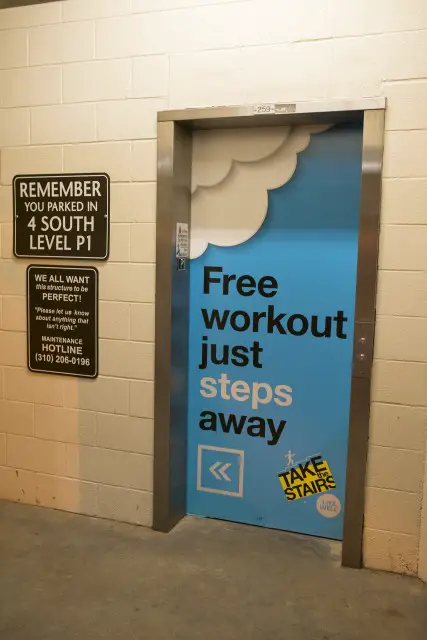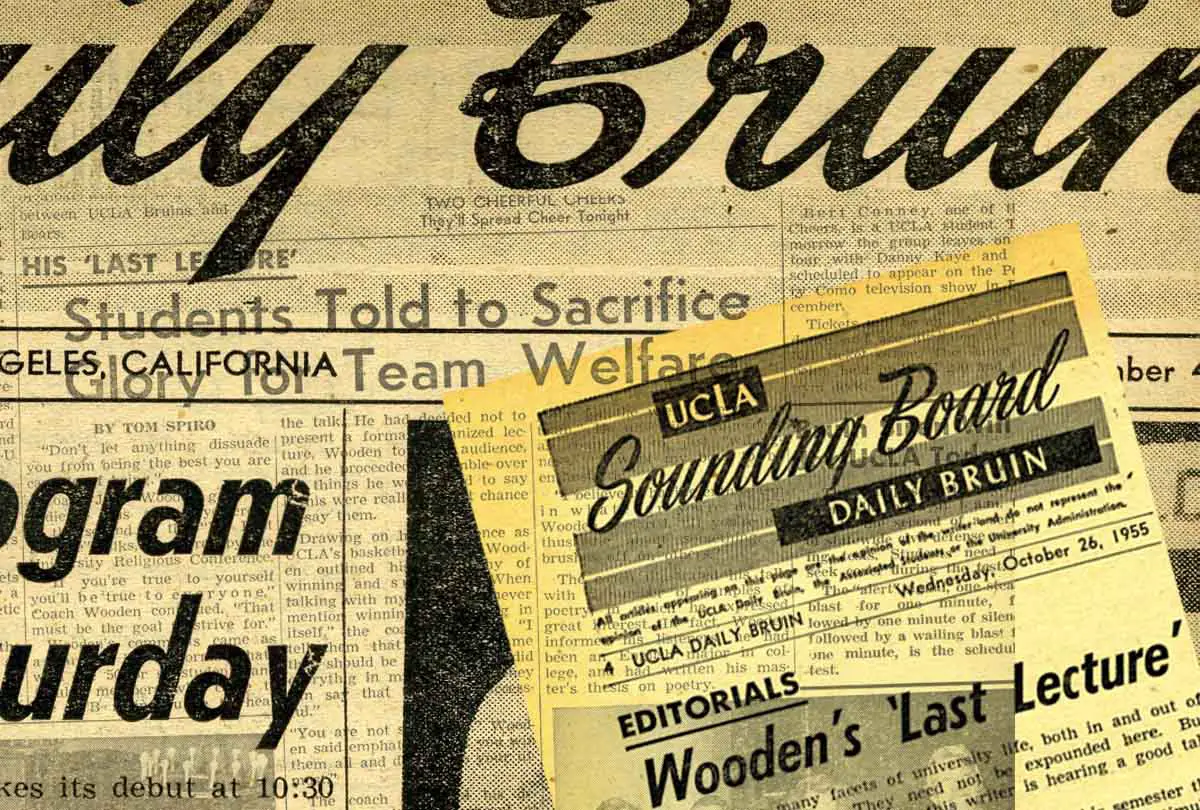While student-run college newspapers often take a hiatus in the summer, some continue publishing online once or twice a week. Most of those that publish avoid campus life stories until more students are back on campus, but UCLA’s student newspaper broke that pattern with an editorial published on July 30, which criticized school administrators for putting up new signs on or beside the elevators on campus.
Each sign, encouraging students to be more active, sports a motto like “Free workout just steps away. Take the stairs.” Seems innocent enough, right? Well, in the editors’ view, the signs discriminate against disabled students because they “perpetuate the notion that taking the elevator is lazy, shaming students with disabilities, visible or not, for using a tool that may be vital to their mobility.” Even though the editorial acknowledged that the signs make a point of including the words “if possible,” the article labeled them “ableist” and “distasteful.”
This incident touches on so many thorny topics (accommodations for disabled people, what exactly constitutes “ableism,” appropriate and inappropriate campus protests, etc.) that it’s hard to know where to start. Because your patience would run out long before I finished ruminating on all of those potential topics, I’ll stick to discussing the excessive political correctness the article displays. Please don’t misunderstand: I have no desire to vilify the students behind the editorial, and I’m confident that their intentions are good. But I do think they’re wrong, and that the assumptions behind their protest are dangerous.
In the first place, the signs don’t mention disabilities at all. Yes, they remind people to use the stairs, but there’s no indication that they’re addressed to anyone besides the able-bodied students who don’t need to take the elevator. But the editors condemned the signs anyway. Consider the underlying premise at work: Any reminder, however oblique, that humans have unequal abilities is unacceptable. Removing reminders won’t remove disabilities’ existence, though. There are things disabled people simply cannot do. No one in a wheelchair can play regulation football, and no one born deaf can fully appreciate a symphony. Is this sad or unfortunate? Of course it is! But it’s silly to ignore reality.
Calling the signs “ableist” implies that they’re on the same level as something racist or sexist. Once that’s accepted, it’s easy to think the signs are unjust and “ableism” is the next ideology social justice campaigners should target. The phrase “equal access” contributes to this view: Isn’t equality for everyone something people should strive for?
Physical inequality isn’t the kind of inequality that can be fixed this way, though. The inequalities that social justice movements attack—like racial segregation or judicial bias—come from people disregarding others’ rights. But with physical inequalities, the sufferers’ difficulties are not (necessarily) the fault of others trying to oppress them; they stem from ailments that, despite the best efforts of thousands of doctors and scientists, cannot be healed.

Trying to ensure equality in any area other than equality before the law becomes risky very quickly. People have varying abilities in many areas besides physical health. Some people are talented at singing or mechanics, and other people are tone-deaf or clumsy. If encouraging people to use their abilities fully is unfair to the people without those abilities, then there are only a few steps left before people actively discourage excellence.
Suppose colleges stopped giving scholarships to students who earn good grades, on the grounds that doing so insults students with learning disabilities that make achieving a 4.0 almost impossible. It’s farfetched, perhaps, but that kind of thinking becomes a danger if people see every inequality as a problem to be fixed.
Fortunately, UCLA’s editorial didn’t attack inequality or unequal treatment per se. It didn’t argue that disabled students should be treated equally by not getting assisted transport. It said they should be treated equally by not having to face a potential reminder that they are physically unequal to other students.
Again, though, the signs don’t even mention disabilities. You can interpret them as a criticism of disabled students only by making their silence more significant than it was probably intended to be. Given that only about 11 percent of college students have physical disabilities, the great majority of UCLA’s students are undoubtedly capable of taking the signs’ advice.
Being this quick to take offense and find insult where, almost certainly, none was meant is a perfect example of political correctness taken too far. This oversensitivity imperils honest communication about any subject because constantly worrying about whether you’ll accidentally commit a microaggression makes it hard to hold firm convictions and state them with confidence.
These issues can sound like an esoteric sociology dissertation—“Political Correctness in Relation to Perceptions of Inequality”—but they impact everyday life. For example, in calling out the signs’ alleged prejudice, the editorial ignored their potential for good. As many organizations have proven, well over one-third of the adult U.S. population is unhealthily overweight; I found estimates ranging as high as 69 percent. The percentage for college-age people alone is almost 20 percent. In this climate, the more people are encouraged to be active, the better.
The signs could benefit even disabled students. In a passing reference near its end, the editorial mentioned that sometimes able-bodied students were unnecessarily using handicap access facilities, like elevators, which caused delays for the students that the facilities are designed to serve. If the much-maligned placards work, though, there will be more room in the elevators for the people who need them most.
If, on the other hand, the editorial succeeds in convincing others, it could spark a chorus of protests from more of UCLA’s students. The school has already dealt with a controversy over similar signs in 2014, which included another article that attacked the signs even more strongly, and the signs were apparently removed due to students’ objections. UCLA administrators have evidently decided the signs deserve another try, but if they’re pressured into taking them down again, the campus may never find out how they could be beneficial.

















